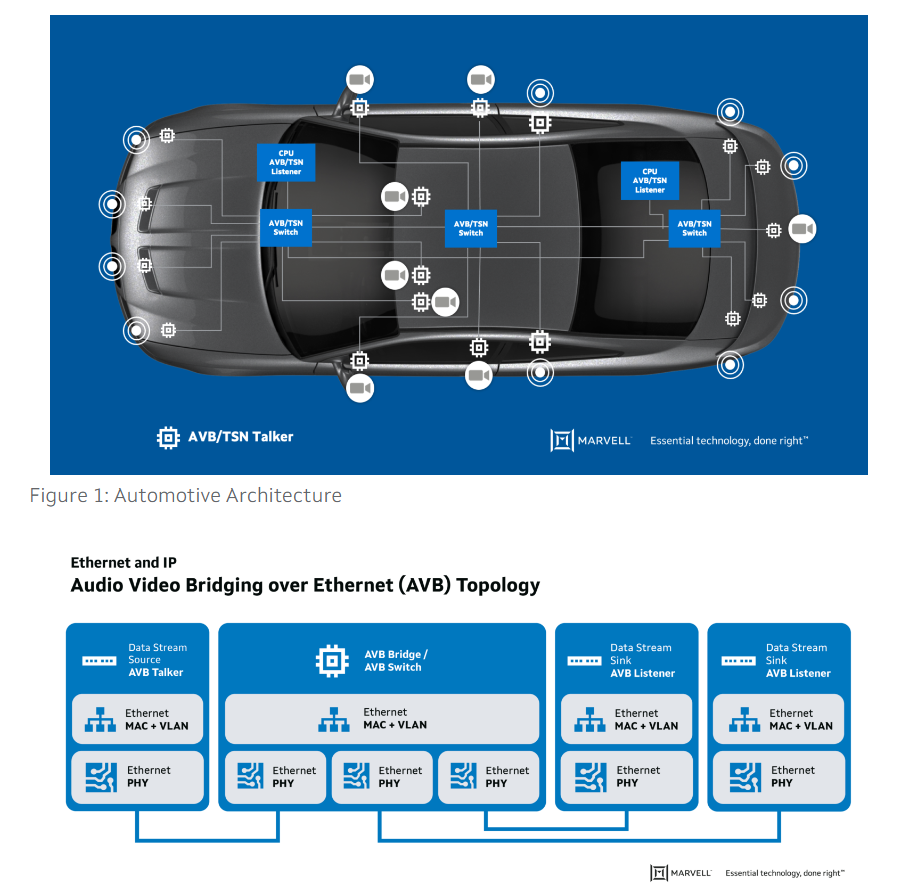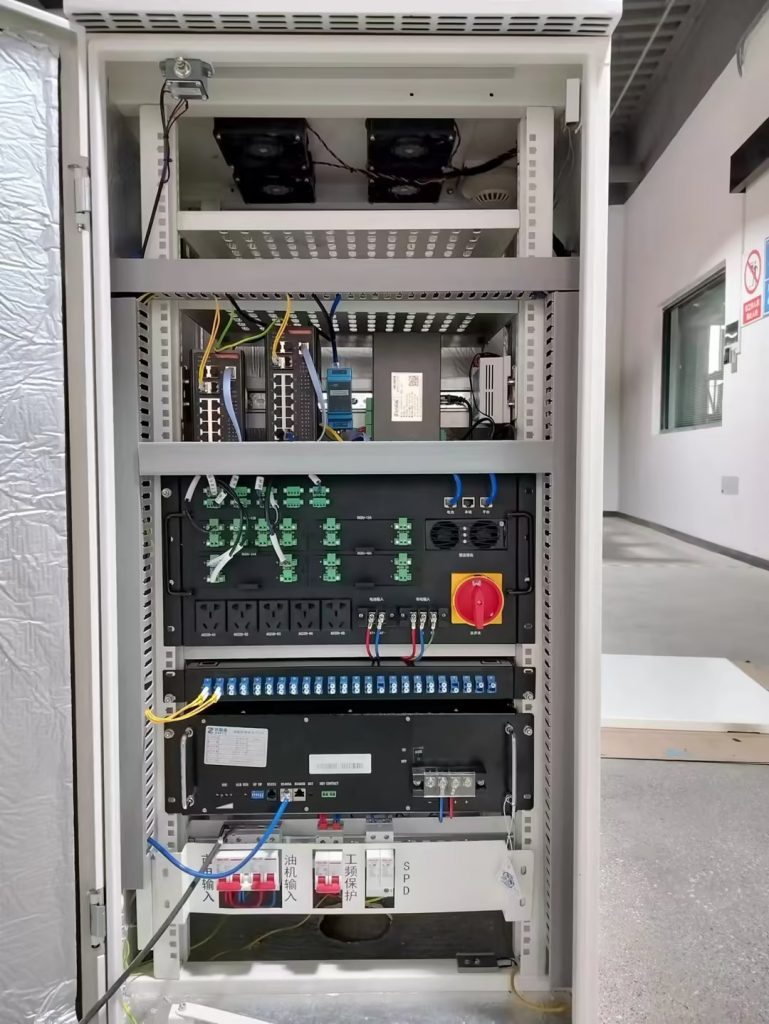Introduction to Connected Cars and Automotive Embedded Systems
Revolutionary advancements in technology have paved the way for a future where our cars are no longer just modes of transportation, but interconnected hubs of innovation. We will dive into one of the most remarkable developments in this field: Time-Sensitive Networking (TSN). This game-changing technology is revolutionizing the automotive industry by enabling real-time communication between various components within a vehicle’s embedded system. So fasten your seatbelts as we explore how TSN is propelling connected cars into new realms of possibility!

The Need for Time-Sensitive Networking in Automotive Embedded Systems
In today’s fast-paced world, technology is rapidly transforming various industries, and the automotive industry is no exception. The rise of connected cars has revolutionized the way we drive and interact with our vehicles. From advanced infotainment systems to autonomous driving capabilities, cars have become more than just a means of transportation.
However, as cars become increasingly connected, there arises a need for reliable and efficient communication between different components within the vehicle. This is where time-sensitive networking (TSN) comes into play. TSN enables real-time communication between various devices in a networked environment.
One of the primary reasons why time-sensitive networking is crucial in connected cars is its ability to support critical applications that require instantaneous response times. For instance, in autonomous vehicles, split-second decisions are essential for ensuring passenger safety on the road.

Moreover, TSN allows for precise synchronization among different sensors and actuators within a car’s embedded systems. This synchronization ensures accurate data transmission and coordination among various components, leading to improved performance and reliability.
Furthermore, as modern cars continue to generate massive amounts of data through numerous sensors and cameras, effective management of this data becomes paramount. Time-sensitive networking offers deterministic latency guarantees that help prioritize critical data flows over non-critical ones efficiently.
Another significant advantage of implementing TSN in automotive embedded systems lies in its scalability potential. As more devices get interconnected within a vehicle ecosystem or even across multiple vehicles on the road (known as Vehicle-to-Vehicle or V2V communication), seamless integration becomes necessary to enable collaborative functions like platooning or collision avoidance.
Time-sensitive networking plays an integral role in enhancing connectivity within connected cars by providing real-time communication capabilities while ensuring reliability and efficiency across all aspects of automotive embedded systems.
Challenges and Solutions for Implementing Time-Sensitive Networking Automotive Systems
Implementing time-sensitive networking (TSN) in connected cars comes with its fair share of challenges. One major challenge is ensuring real-time communication between various components within the vehicle’s embedded systems. With the increasing complexity of automotive networks, there is a need for precise synchronization to avoid delays or failures.
Another challenge lies in achieving deterministic behaviour, where messages are delivered within specific time constraints. In a high-speed automotive environment, this becomes even more critical to ensure reliable and safe operation. Moreover, TSN must also address the issue of network congestion as multiple devices communicate simultaneously.
To overcome these challenges, solutions such as advanced scheduling algorithms and traffic shaping techniques can be implemented. These technologies prioritize critical data packets over non-critical ones, allowing for timely delivery while minimizing network congestion.
Additionally, implementing TSN requires collaboration among different stakeholders involved in the development of connected car systems – including automakers, suppliers, and standardization bodies. This ensures compatibility across different platforms and enables seamless integration of TSN into existing automotive architectures.
By addressing these challenges head-on and leveraging innovative solutions like TSN technology, the future of connected cars looks promising. As vehicles become more intelligent and interconnected than ever before, TSN provides a robust framework that enhances the performance and reliability of automotive embedded systems.
With ongoing advancements in TSN standards and protocols specifically tailored to meet the unique requirements of the automotive industry – such as IEEE 802.1Qbv for time-aware shaper mechanisms – we can expect further improvements in real-time communication capabilities within connected cars.

Case Studies: Examples of Companies Using Time-Sensitive Networking in Connected Cars
When it comes to the implementation of time-sensitive networking (TSN) in connected cars, several companies have taken the lead. Let’s take a look at some notable case studies that demonstrate how TSN is enhancing automotive embedded systems.
One company that has embraced TSN technology is BMW. They have integrated TSN into their vehicles to provide real-time communication between various components and sensors. This enables faster decision-making and enhances overall vehicle performance and safety.
Another example is Fiberroad Layer 3 Industrial TSN Ethernet Switch is a cutting-edge solution that has been successfully deployed on the Highway intelligent transport system, revolutionizing its operations. This advanced switch combines the power of industrial-grade technology with Time-Sensitive Networking (TSN) capabilities, ensuring precise and reliable communication between various devices in real-time. With its robust design and exceptional performance, this Industrial TSN Ethernet Switch guarantees seamless integration and efficient data transmission across the entire highway network infrastructure. Its deployment has greatly enhanced the overall functionality of the intelligent transport system by enabling high-speed connectivity, reducing latency issues, and supporting mission-critical applications such as traffic management systems, surveillance cameras, toll collection systems, and more. The Fiberroad Layer 3 Industrial TSN Ethernet Switch truly represents a significant technological breakthrough in optimizing highway operations for enhanced safety and efficiency.

Moreover, NXP Semiconductors has contributed significantly to advancing TSN in automotive applications. They offer a comprehensive portfolio of hardware and software solutions specifically designed for time-critical networking requirements. Their innovations help automakers achieve reliable real-time communication while optimizing resource utilization.
These case studies illustrate how various companies are leveraging TSN technology to enhance automotive embedded systems. As more manufacturers recognize the value of time-sensitive networking, we can expect further advancements that will revolutionize the future of connected cars.
The Future of Connected Cars and Time-Sensitive Networking
With TSN, vehicles will have the capability to process large amounts of data with ultra-low latency. This means that critical information can be transmitted instantaneously between different sensors, actuators, and control units within the car network. As a result, autonomous driving systems can make split-second decisions based on accurate and up-to-date data inputs.
Furthermore, TSN ensures deterministic communication in connected cars by providing guaranteed bandwidth allocation and timely delivery of time-critical messages. This allows for precise coordination among multiple devices operating simultaneously in the vehicle’s network.
In addition to improved performance, TSN also offers significant cost savings as it eliminates the need for separate wiring harnesses for different functions like infotainment systems or advanced driver assistance systems (ADAS). Instead, all these functions can seamlessly share a common Ethernet-based architecture enabled by TSN.
Leading automotive manufacturers such as BMW and Audi are already adopting TSN technology in their vehicles to enable high-speed connectivity and support emerging applications like over-the-air updates. By leveraging this powerful networking solution, they are positioning themselves at the forefront of innovation in the automotive industry.
As we move towards an increasingly interconnected world where cars communicate not only with each other but also with smart city infrastructure such as traffic lights or parking meters, TSN will play a vital role in ensuring reliable and secure communication channels.






